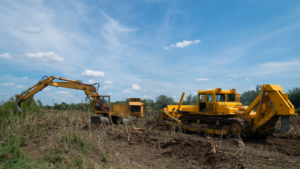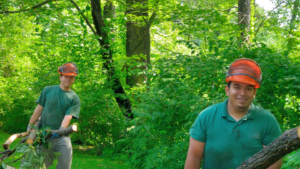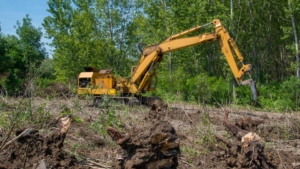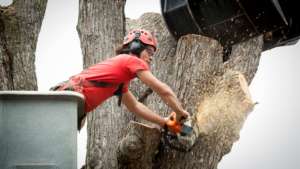Are you planning to build your dream home on a piece of land in Ocala? Before you start construction, it’s important to clear the land to ensure safety and optimal building conditions. That’s where residential land clearing comes in. In this blog, we will provide you with all the information you need to know about residential land clearing in Ocala. We will discuss the purpose of land clearing, common procedures involved, costs associated with it, and how to prepare your land for the process. Additionally, we will cover the effects of land clearing on the environment and sustainable practices that can be adopted during the process. So, whether you’re a first-time homeowner or an experienced builder, read on to learn everything about residential land clearing in Ocala.
Understanding Residential Land Clearing
Land clearing involves the removal of vegetation to prepare land for construction or landscaping. Residential land clearing focuses on clearing residential properties for new homes or landscaping purposes. Specialized equipment is often used, and proper techniques should be followed to minimize environmental impact and ensure compliance.
Purpose of Residential Land Clearing in Ocala
Residential land clearing in Ocala serves various purposes, such as creating space for new construction projects and landscaping. It helps in removing hazardous vegetation, improving safety, and enhancing the aesthetic appeal of the property. Additionally, land clearing allows for better utilization of the available space.
Common Procedures Involved in Land Clearing
Common procedures involved in land clearing include tree removal, vegetation clearing, grading, demolition, and land cleaning. Tree removal involves removing trees, stumps, or debris from the land. Vegetation clearing clears shrubs and unwanted plants. Grading ensures even and properly sloped land. Demolition is necessary when clearing land with existing structures. Land cleaning removes debris or obstacles for construction or landscaping activities.
Costs Involved in Residential Land Clearing
Residential land clearing costs vary based on factors like land size, complexity of the process, and local market rates. Services like tree removal, grading, or demolition can also affect the cost. Additional expenses may include permit and disposal fees. Getting multiple quotes helps in finding the best deal, while hiring professionals saves time, money, and ensures effectiveness.
Factors Affecting the Cost of Land Clearing
Factors influencing the cost of land clearing include the size of the land, complexity of the process, accessibility, type and quantity of vegetation or debris, and local market rates. Larger areas, difficult terrain, specialized removal techniques, and higher market rates can all contribute to increased costs.

Average Costs in Ocala
The average cost of land clearing in Ocala can range from $1,000 to $5,000, depending on various factors. Tree removal costs typically range from $300 to $1,500, while grading or land leveling costs can range from $500 to $3,000. Demolition costs vary based on the size and type of structure being demolished. It’s important to obtain detailed cost estimates from land clearing companies in Ocala to get an accurate idea of the specific costs for your project.
Preparing Your Land for Clearing
Preparing your land for clearing involves assessing its size and conditions, identifying potential risks like underground utilities or protected species, and clearing personal belongings or obstacles. Obtain necessary permits and consult experts to plan the process efficiently.
Assessing the Size and Conditions of the Land
Assessing the size of the land, including total area, dimensions, and boundaries, helps determine clearing scope and estimate costs accurately. Evaluating soil composition, terrain, and existing vegetation provides insights into potential challenges like tree removal or grading. Conducting a topographic survey aids in identifying drainage or erosion concerns.

Identifying Potential Risks and Challenges
During the land clearing process, it is essential to identify potential risks and challenges. This includes underground utilities like gas or water lines, protected or endangered species, hazardous materials, grading or drainage issues, and land or tree preservation requirements. Considering these factors ensures safety, compliance, and minimizes environmental impact.
The Land Clearing Process
The land clearing process typically begins with the removal of trees, stumps, and debris using specialized machinery. Vegetation is then cleared, followed by land grading to ensure proper leveling. If needed, demolition is conducted before the final step of cleaning the land from any debris.
Stages in the Residential Land Clearing Process
Understanding the process of residential land clearing is crucial for a successful project. It involves tree removal, grading, and cleaning. Hiring a professional land clearing company ensures efficient and safe clearing. Proper planning and preparation are essential, along with following local regulations and obtaining necessary permits.
Equipment Used in Land Clearing
Specialized equipment, such as stump grinders, tree mulchers, and excavators, is used in land clearing. Professional companies have the right equipment for projects of any size. Advanced equipment ensures efficient and precise clearing operations, while maintenance and training are essential for safety.
Effects of Land Clearing on the Environment
Land clearing has significant impacts on the environment. It disrupts natural habitats, leading to loss of biodiversity. Soil erosion is common, causing sediment runoff. Deforestation affects carbon sequestration and climate change. Sustainable practices can minimize negative effects.
Environmental Impact of Residential Land Clearing
Residential land clearing in Ocala can have significant environmental impacts. It can lead to habitat destruction, affecting local wildlife populations. Soil erosion caused by land clearing can result in water pollution and sedimentation. The removal of trees reduces the amount of carbon dioxide absorbed, contributing to climate change. Additionally, clearing land can disrupt natural drainage patterns, leading to flooding or increased water runoff. However, employing sustainable land clearing methods can help mitigate these environmental impacts.
Sustainable Practices in Land Clearing
Implementing erosion control measures like retaining walls or sediment barriers minimizes soil erosion during land clearing. Tree preservation techniques such as tree wrapping or root pruning protect valuable trees. Using selective clearing or land grading reduces the impact on natural habitats. Replanting native vegetation restores biodiversity and prevents soil erosion. Proper waste management promotes sustainable land clearing practices.
Conclusion
Residential land clearing is an important step in preparing your property for development or construction. It involves removing trees, vegetation, and other obstacles to create a clean and level surface. The purpose of land clearing in Ocala is to ensure that your project can proceed safely and efficiently. The cost of land clearing can vary depending on factors such as the size of the land and the complexity of the job. It is important to assess the size and conditions of your land and identify any potential risks or challenges before beginning the clearing process. Sustainable practices in land clearing can help minimize the environmental impact of the process. If you have any questions or need assistance with residential land clearing in Ocala, feel free to get in touch with our team. We are here to help!









